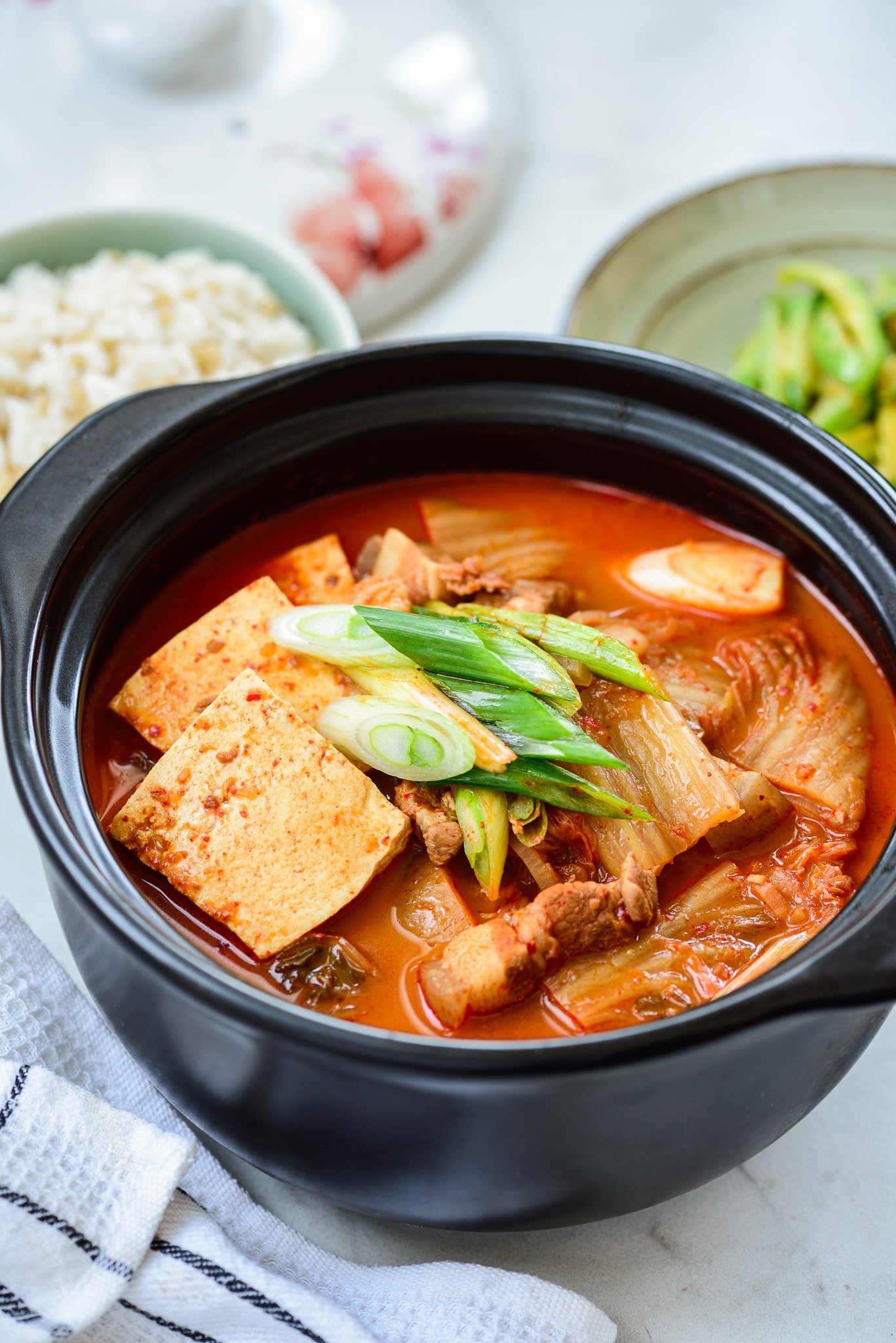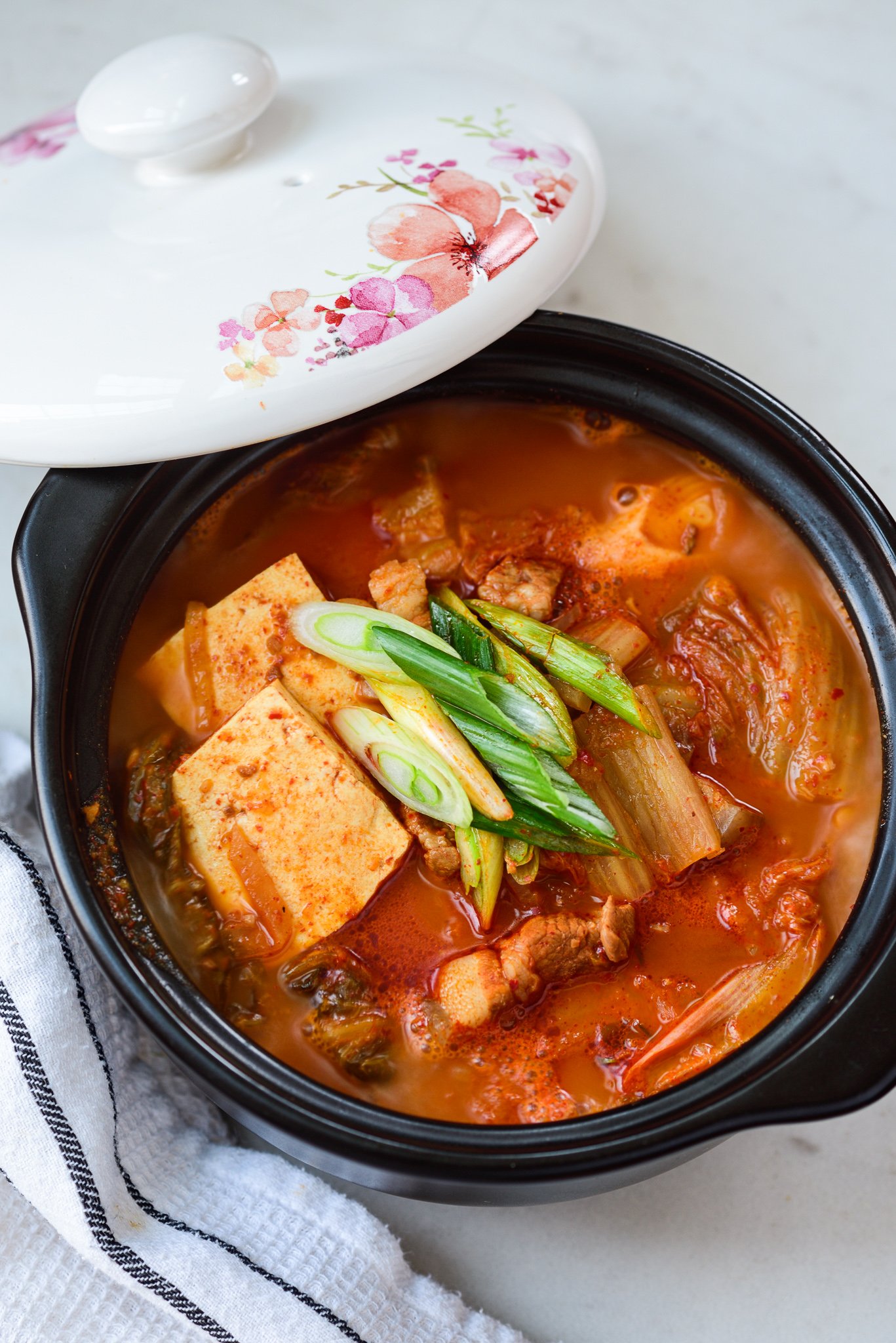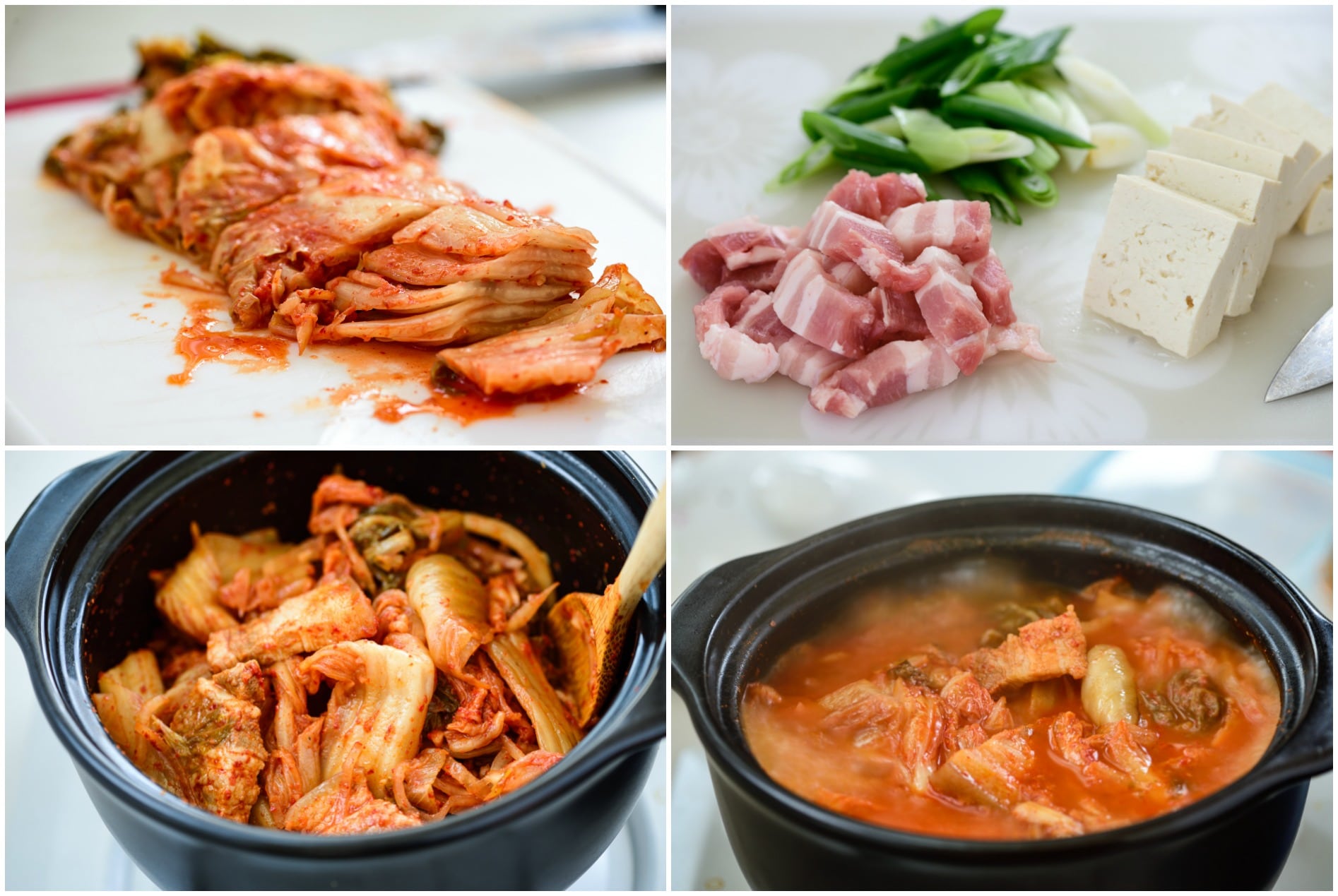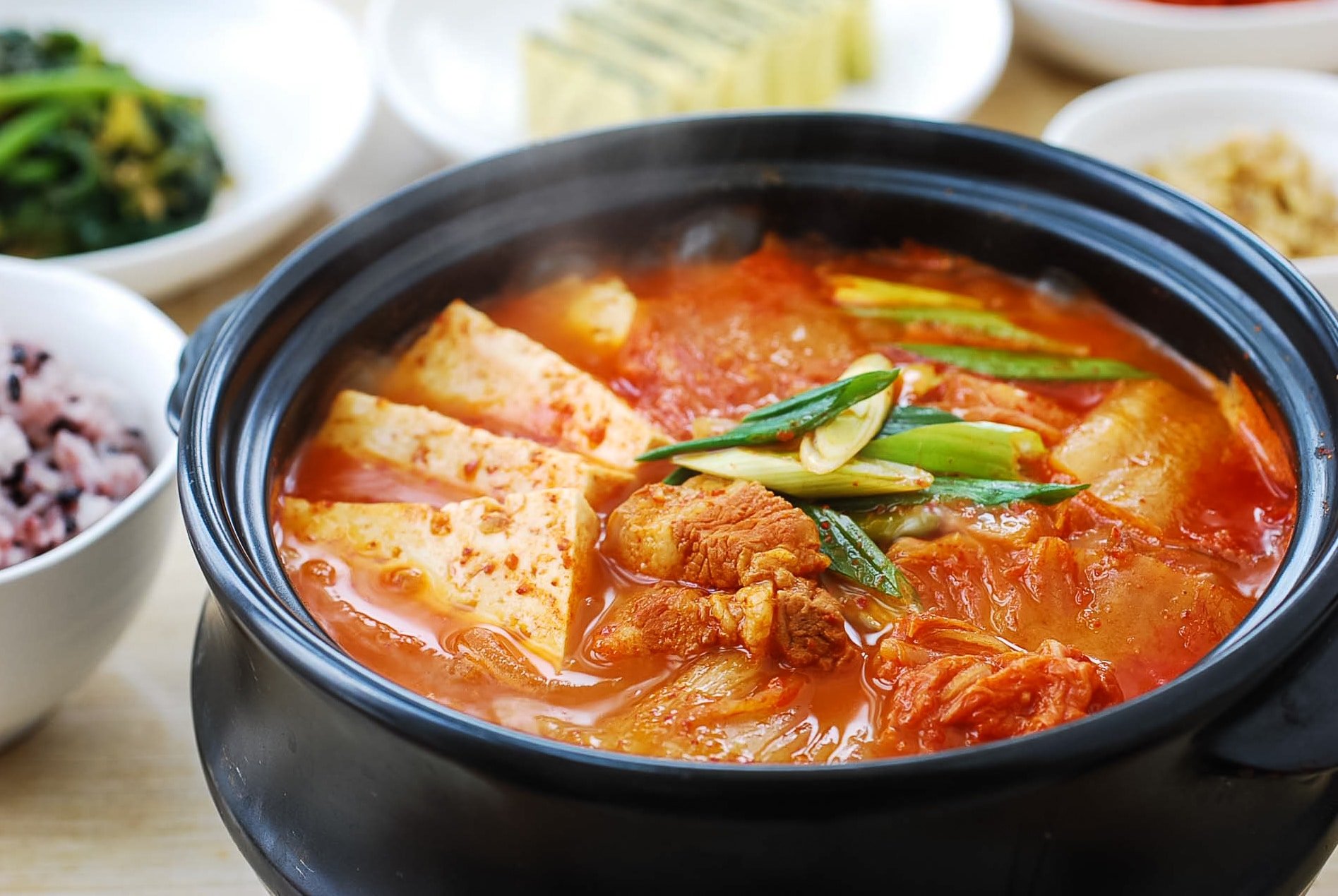Have some old kimchi in the fridge? Make this kimchi jjigae! It’s delicious with fatty pork. Such a comfort food!

When kimchi gets old, it becomes an excellent ingredient for various other dishes! The most common dish made with aged kimchi is kimchi jjigae (김치찌개). It’s a go-to stew in Korean homes and my absolute favorite!
Growing up in Korea, we had a lot of meals just with kimchi jjigae and a bowl of rice. I don’t remember ever getting tired of it! Whether you make it to use up old kimchi, or to satisfy a craving, this small pot of comfort food is all you need for a satisfying meal.
The kimchi
When cooking with kimchi, you should always use fully fermented, sour kimchi. The older the better! If you can’t wait for your kimchi to turn sour, add a little bit of vinegar to the kimchi before using it. It’s not going to be as good as sour kimchi, but it’ll help a little.
Also, Your Korean market may carry commercially packaged kimchi called mukeunji (묵은지), meaning old kimchi.
If the kimchi is overly sour to your taste, add a teaspoon or two of sugar to the stew to balance out the sour taste.

The Meat for kimchi stew
While there are many variations, fatty pork is most favored for kimchi jjigae in Korea. As I always say, kimchi and fatty pork is a match made in heaven. Not surprisingly, pork ribs are common and delicious in kimchi stew. Pre-boil the ribs until fairly tender, 20 to 30 minutes, and then cook with kimchi. If you don’t like pork, use beef or canned tuna instead. This recipe also includes the canned tuna version.
Growing up, we also enjoyed kimchi jjigae that’s simply made with anchovy broth without any meat. It gives a nice, clean taste to the stew.
With good sour kimchi and pork, it really doesn’t take much to make delicious kimchi jjigae. Also see my Instant Pot kimchi jjigae.  Tips for making good kimchi jjigae
Tips for making good kimchi jjigae
1. Use old, sour kimchi.2. Cook the kimchi and pork together before adding the liquid. This step develops extra flavor.3. Use the water used to rinse rice (ssalddeumul, 쌀뜨물) as the stew base. It’s commonly used for Korean stews. Use the water from the second or third round of rinsing. The rice water thickens the broth slightly and enhances the flavor.4. Anchovy broth, chicken broth, milky bone broth or vegetable broth will also be great as a soup base.5. Use the juice from the kimchi if available. It will add lots of flavor to the broth.
If you want to try making kimchi at home, it’s not that difficult to make. Here are my easy-to-follow recipes: pogi kimchi, mak kimchi, and vegan kimchi.
More recipes with old kimchiInstant Pot kimchi jjigaeKimchi jeon (pancakes)Kimchi fried riceDubu kimchiKimchi mandu (dumplings)Kimchi kongnamul guk (soup)Kimchi bibim guksu (cold noodles)Braised kimchi (kimchi jjim) Watch how to make it
Watch how to make it
Source: https://www.koreanbapsang.com








